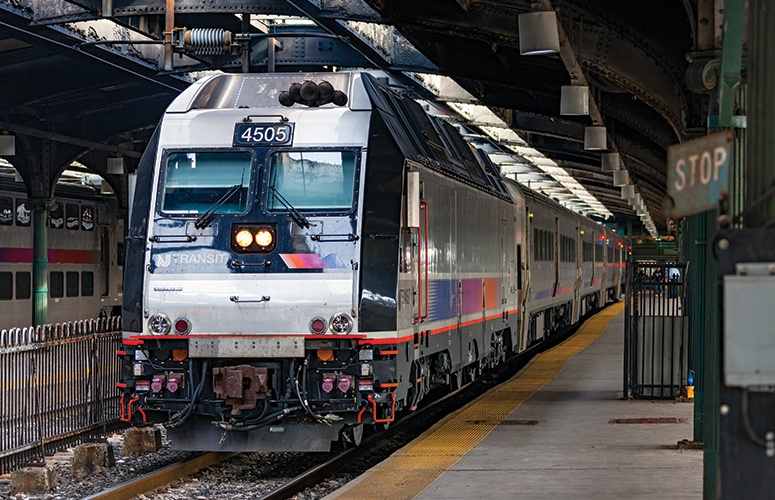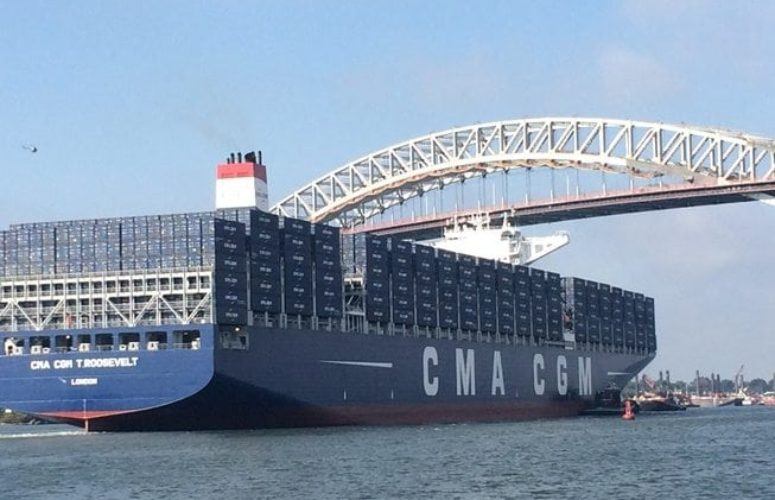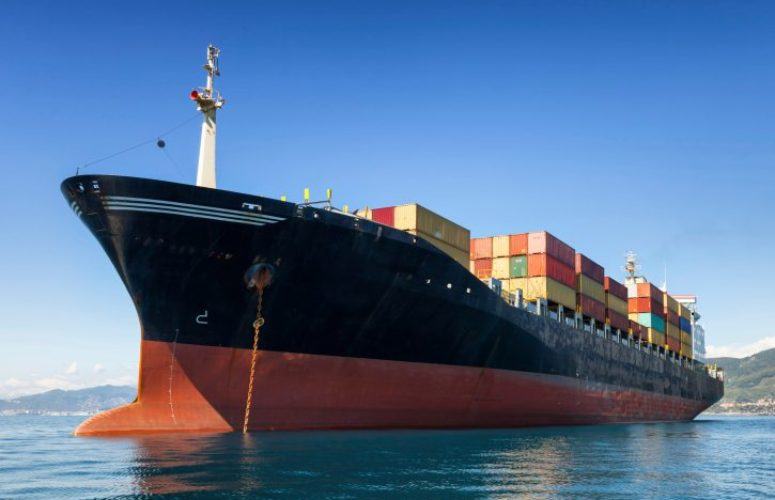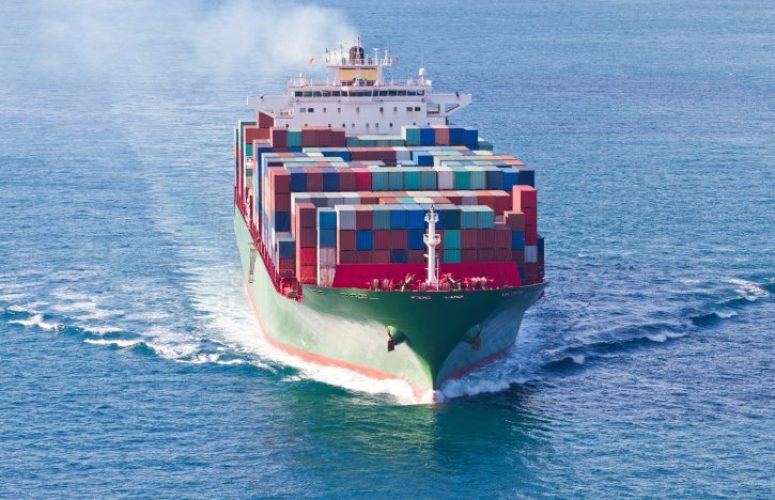
Port, Rail and Road Assets Pave the Way for Prosperity
The state continues to revitalize its transportation infrastructure, making New Jersey more attractive to business, but funding remains a limiter on ambitious projects.
By João-Pierre S. Ruth, Contributing Writer On Mar 12, 2019As an epicenter for travel and commerce, New Jersey is an enviable place to live, work and play. The state’s infrastructure connects commuters to their jobs and tourists to their favorite getaways.

Maintaining and revitalizing the transportation infrastructure in New Jersey is a collaborative effort that includes specialized workers such as carpenters and contractors. Without them, the plans laid out by developers and the state cannot advance.
“Infrastructure work ebbs and flows based on the funding available to have projects become shovel-ready,” says Bill Sproule, assistant executive secretary treasurer for the Keystone Mountain Lakes Regional Council of Carpenters, which includes New Jersey. He says there are periods when 10 to 15 percent of the council’s membership works on infrastructure projects. That can even grow to 20 percent when activity is extremely high. “We like to see an abundance of infrastructure work because it keeps a nice portion of our members busy,” he says.
Such projects are naturally a benefit to the broader economy as it invites more commerce and citizens into the state. “Once you invest in your infrastructure, other things get built,” Sproule says. For example, the widening of New Jersey Turnpike has led to new warehouses along that segment of the highway, he says. “It promotes other businesses to locate in the area because of the accessibility.”
The layperson might not make the immediate connection between carpenters and transportation infrastructure. Sproule says carpenters are called upon to make sure materials are level and to build the framework that concrete is poured into for construction projects. “Iron workers set the reinforcing rods, or rebar, but the framework you see when a concrete structure is being built is maintained by carpenters,” he says.
That includes tunnels, water and sewage treatment plants, and other projects where reinforced concrete is an integral part of the plan. Carpenters also come into play for building docks and establishing foundations for bridges in free-flowing water, he says. For example, the final stages of the Goethals Bridge replacement included support towers with poured-in-place reinforced concrete. Sproule says carpenters were also involved with the Bayonne Bridge raising and the Pulaski Skyway rehabilitation alongside other tradespeople.
Though there is a need for carpenters in the ongoing upkeep and rehabilitation of infrastructure, Sproule says some of that potential work can been stalled by budgetary reasons. “There’s been an issue with the federal government not [providing] the amount of infrastructure dollars on the states that President Trump had initially promised,” he says. “The states count on the federal matching dollars. The Gateway Tunnel is something we’re keeping our fingers crossed will come to fruition. That’s something that is desperately needed for the Northern New Jersey region.”
Naturally, he says even more projects would be underway with more dollars allocated – which can be crucial to the state’s prosperity. “We’ve got to have a modernized infrastructure to attract businesses and residents,” he says.
In late January, Gov. Phil Murphy called upon federal support for the Gateway Program, which includes plans for a new Hudson River Tunnel and the refurbishment the North River Tunnel. The proposed rail infrastructure updates would target a 10-mile stretch of the Northeast Corridor line. That particular piece of the rail line sees more than 200,000 daily riders via Amtrak and NJ Transit. In a statement, Murphy implored the Trump administration to give its backing to the project. “The rehabilitation of the existing North River Tunnel and construction of the new Hudson Tunnel is crucial to the tristate area, and in particular New Jersey,” Murphy said. “It is time for the Trump administration to prioritize the needs of commuters and our nation’s economy, and commit to funding the Gateway Program.”
Murphy has prioritized a number of transit infrastructure updates since taking office, including January’s hiring of more NJ Transit train engineers and bus operators and an additional $242-million state investment announced in 2018 for NJ Transit.
As a corridor state, much of the travel on the state’s roadways is transient, moving goods from Point A to Point B, says Jack Kocsis Jr., CEO of the Associated Construction Contractors of New Jersey. That means New Jersey’s roads see more abuse than many other states whose infrastructure is primarily used by their residents rather than cargo traffic. Compounding the need for infrastructure upkeep is New Jersey’s high-density populace that commutes to work. “The logistics of maintaining our roadways becomes more complicated because we don’t have the luxury of shutting roadways down,” Kocsis says. “It’s a dynamic many other states don’t have.”
Redevelopment and construction on the state’s transit pathways help fuel the economy by increasing access for commerce, he says, but funding such projects is a difficult balancing act. His organization is trying to work with government to come up with innovative ways to support needed improvements. That includes backing legislation to potentially bring private investment to the public infrastructure market.
Improvements such as raising the Bayonne Bridge help the state remain competitive as a transit and commerce hub, he says, giving larger cargo ships access to local port terminals. “If we didn’t raise that bridge, the supertankers were going to go somewhere else to be offloaded,” Kocsis says.
The Port of New York and New Jersey is coming off of a record-setting 2018, with 2019 on track to raise the bar even higher, says Sam Ruda, deputy director, Port Authority of New York and New Jersey (PANYNJ). “We say that we can reach about 125 million people within 36 hours of discharge from a vessel here through a combination of truck and rail,” he says. The port finished 2018 with record volumes a little more than 7 million 20-foot equivalent units (TEUs) of cargo capacity, he says. That activity is related to the robust industrial real estate – especially warehousing distribution – along the Turnpike corridor.
Companies such as Amazon and IKEA have notably established significant warehousing, distribution, and fulfillment operations in New Jersey, Ruda says. This represents a shift away from a trend in commerce to locate operations primarily where low-cost land and labor are available. “Now there is a trend to be as close to the consumption market – the populace – and as close to the port as possible,” he says.
Support for the port comes from the tenants themselves, Ruda says. In 2018, tenants invested more than $300 million at the terminals to further their growth. “Thousands of people have good-paying jobs because of this port complex,” he says. The port is the largest on the East Coast and the third largest in the country, he says.
Increased activity at the port does pose some long-term challenges. Trucks moving in and out of the port must contend with highway traffic that can be exacerbated by the flood of commuters. A review of a master plan is expected to help outline what potential projects could be undertaken to help the port stay ahead of the curve. “We have our planning challenges with congestion, but we continue to work on planning roadway improvements, rail improvements, and dock improvements,” Ruda says. “It never ends.”
Given the scale of the port and the surrounding commercial operations, it should not be surprising to see companies flock here to unload cargo quickly. “There’s about one billion square feet of warehouse distribution space and ecommerce fulfillment centers within 50 miles of the port,” says Bethann Rooney, assistant director of the ports department at PANYNJ.
The resources available at the port are poised to scale up even more in the years to come. PANYNJ’s board of commissioners in 2017 approved the 2017–2026 Capital Plan that provides $32 billion in capital investment for more than 600 projects over 10 years for the region. “Our capital spend in 2018 was in the area of $160 million and 2019 is right in line with that,” Rooney says.
One of the changes being explored for the port is finding a way to expand the hours of operation for container terminals, which are currently open from 6 am to about 7 pm. Demand to move cargo from the port to trucks is escalating fast. “The time is coming when we will not be able to fit [daily operations] in that same window, Monday through Friday,” Rooney says.
This raises questions about what can be done to accommodate longer hours and how it might affect the region’s supply chain. If the port terminals remain open, warehouses and distribution centers would need to be open longer as well so that trucks could reach them during a second or third shift, she says. Spreading truck traffic outside of peak commuter hours could free up capacity, Rooney says. Other ideas to alleviate congestion being considered include moving more cargo by water through short-sea shipping to destinations that are not reachable by rail. That may be a way for the port to keep up with ever-growing demand without being limited by the constraints of land-based infrastructure.
It is clearly evident that millions of dollars are on tap to fix the state’s transportation infrastructure.
To access more business news, visit NJB News Now.
Related Articles:





